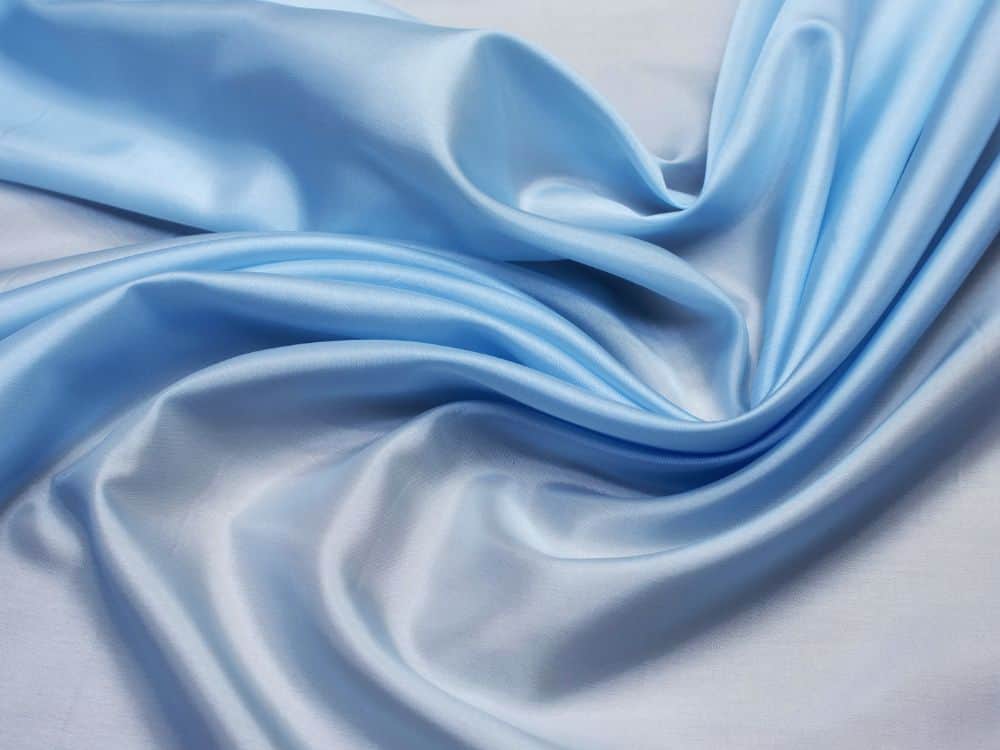
What Is Rayon Fabric & Is It Sustainable?
Is rayon fabric worth all the rage—or worth removing from our sustainable fashion wardrobes?
Also known as viscose fabric, this semi-synthetic material is the third most popular textile in the world.
It’s also touted as one that’s good for our planet, but is it?
What is rayon fabric and just how sustainable is rayon?
In this article, we’ve explored the ins and outs of this cellulosic fiber, how it shapes up against natural fibers, and how it might not be as “natural” as some brands claim.
The Full List Of Rayon Fabric Facts & Properties
- What is rayon fabric?
- How is rayon fabric made?
- Is rayon sustainable?
- Different types of rayon fabrics
- Pros and cons of rayon fabric
- Rayon fabric vs cotton
1. What Is Rayon Fabric?
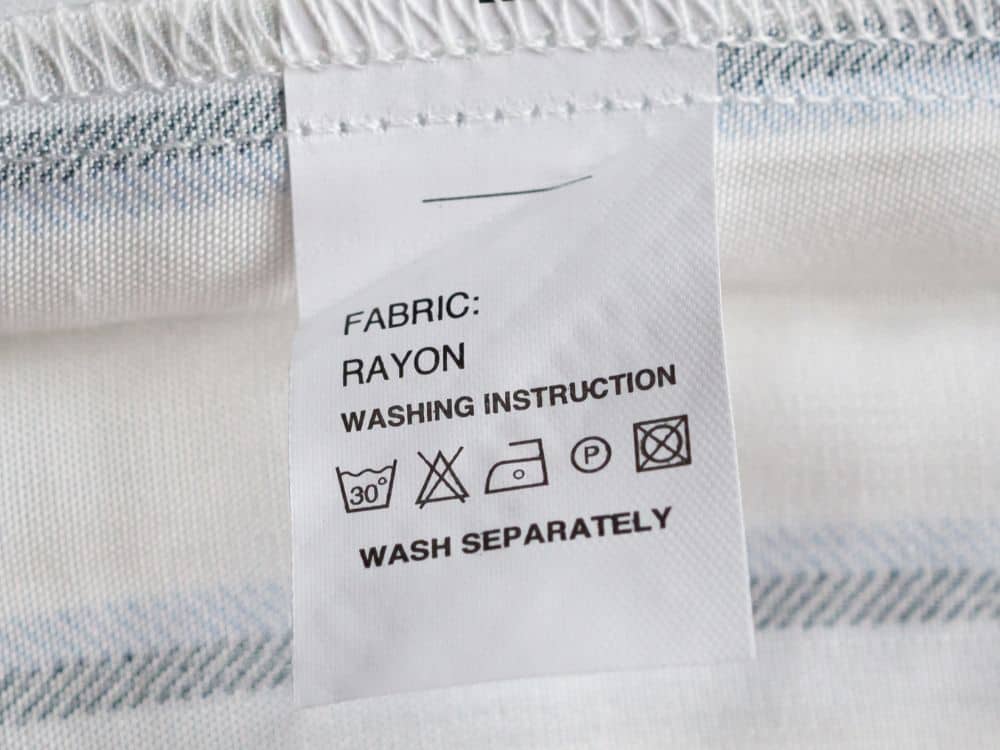
When perusing fabric tags, you may find yourself wondering, “What material is viscose rayon?”
This one’s easy: rayon = viscose and viscose = rayon.
While these are one and the same and can be used interchangeably, you’re more likely to see “viscose” on the label of luxury garments, or if you’re shopping in Europe.
Viscose/rayon fabric ends up in a lot of our clothes, especially silk alternatives.
In fact, it was first known as “artificial silk”.
What is rayon made of?
Rayon fabrics begin life as some form of wood pulp or plant cellulose—though what type of wood pulp depends on if we’re talking bamboo rayon, lyocell rayon, or other forms.
So is rayon synthetic or natural?
It’s both and neither.
While it might be tempting to call rayon a natural fiber (and plenty of brands do) because it’s plant-based, the process that natural fiber must undergo renders it into something a little less than natural.
That’s why rayon filaments are classified as a semi-synthetic fiber, cellulose fiber, or cellulosic fiber.
This puts it in the same class as lyocell, modal, bamboo, cupro, and acetate (used for the likes of somewhat sustainable sunglasses).
Semi-synthetic cellulosic fiber or not, if it comes from pure cellulose from plants, it must be sustainable then, right.
Not so fast. Let’s rewind and see how rayon is made.
2. How Is Rayon Fabric Made?
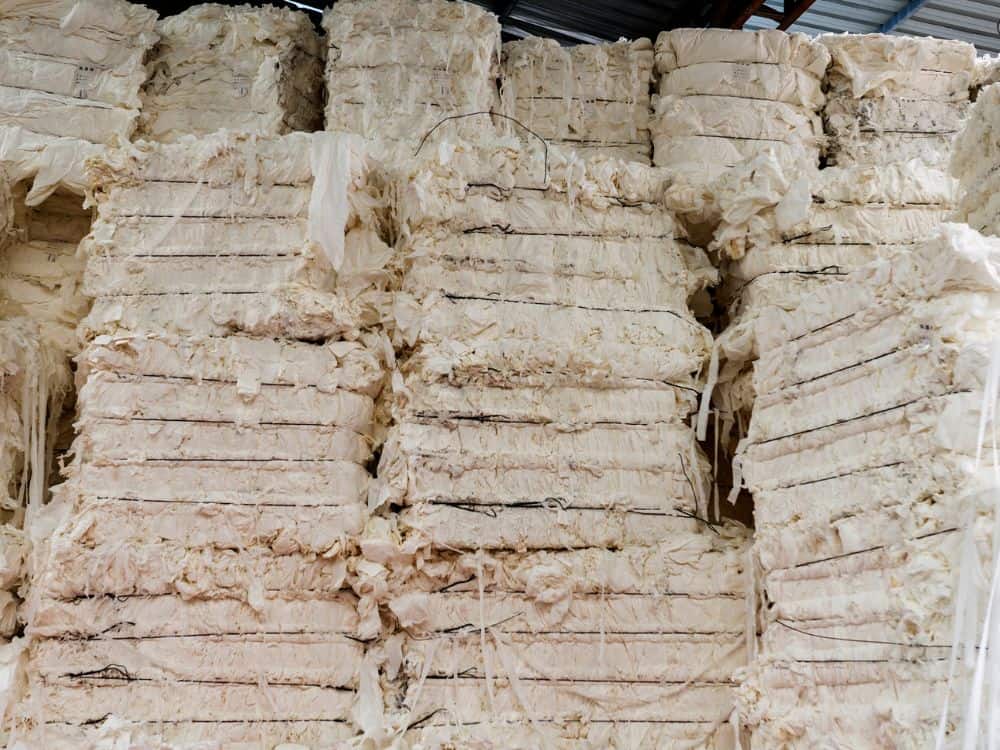
Rayon may start out as wood pulp, but the natural ingredient doesn’t stay “natural” for long.
Rayon’s alternative identity viscose comes from the fact that it becomes a viscous liquid during manufacturing—how else could we turn wood into something akin to silk?
This process of becoming a semi-synthetic fabric is long and far outside the realm of nature.
How is viscose fabric made?
Rayon production can vary slightly based on what type of rayon we’re talking about, but it traditionally involves the following steps:
- Cellulose is extracted from wood pulp (typically from beech or pine trees or bamboo).
- The cellulose is dissolved in caustic soda (sodium hydroxide) to convert it to its impurity-free alkali form.
- The alkali cellulose is squeezed between two rollers to form a sheet, which is then crumbled into “white crumb.”
- Exposure to pure oxygen and the addition of carbon disulfide transforms the substance into “yellow crumb.”
- After being dissolved again, the yellow crumb ripens and is filtered.
- A spinneret transforms the solution into fibers.
- A soak in a sulfuric acid bath turns the fibers into filaments that can be spun, drawn, and washed.
That doesn’t sound very eco-friendly, does it?
3. Is Rayon Sustainable?
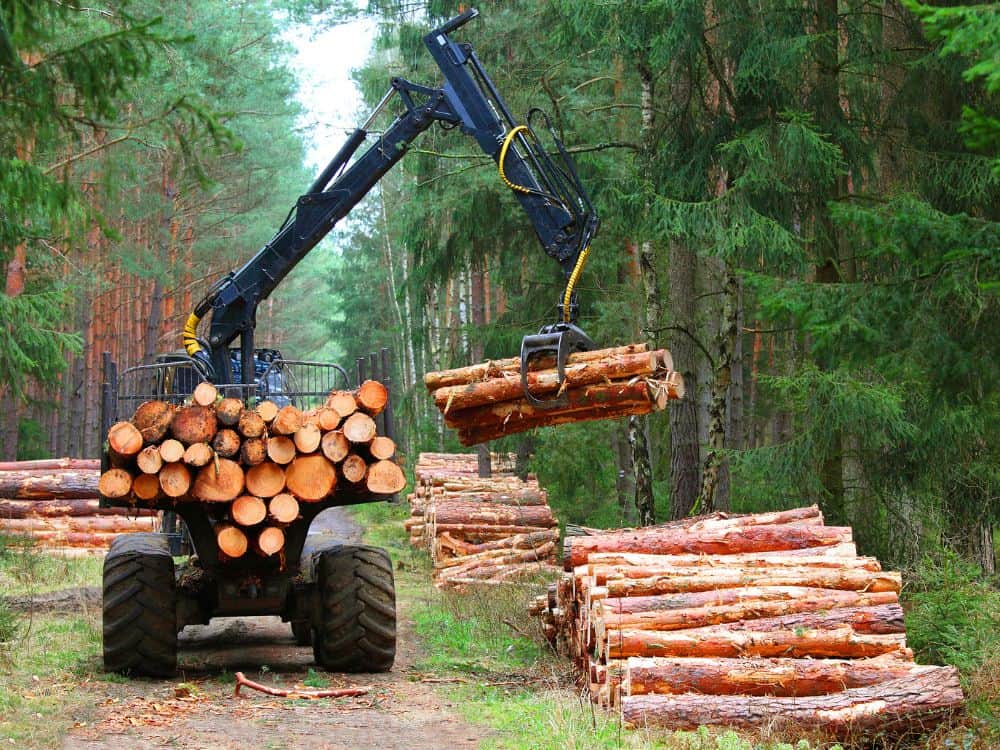
Is rayon fabric ethical?
It’s important to first consider what all those scary chemicals mean for textile industry workers.
Sulfuric acid (AKA battery acid) is officially classified as a hazardous substance that can also cause skin and eye problems, and lead to reproductive complications, lung damage, burns, and more.
According to the National Institutes of Health, it’s a human carcinogen when inhaled in a mist.
The caustic soda needed to create alkali cellulose is corrosive and can lead to eye damage.
Most concerning of all rayon manufacturing chemicals is carbon disulfide, a colorless liquid with about 150 years of evidence showing how harmful it is for workers.
Carbon disulfide is necessary to remove the cellulose to allow it to be further transformed into rayon, but it also has an undesirable effect on humans.
It causes a degenerative brain disease and subsequent adverse effects on the nervous system. These may manifest chronically in subtle personality changes, dizziness, anxiety, anorexia, vision changes, and Parkinsonian paralysis.
It may also produce acute complications for the kidneys, blood, nerves, heart, liver, eyes, and skin, and lead to mental deterioration and insanity to those exposed long term.
In Fake Silk: The Lethal History of Viscose Rayon, Paul David Blanc writes:
“Throughout most of the 20th century, viscose rayon manufacturing was inextricably linked to widespread, severe, and often lethal illness among those employed in making it.”
Is viscose/rayon sustainable?
Even if workers are adequately protected from its harmful effects, the environment isn’t.
For every gram of viscose rayon that’s produced, up to 30 grams of carbon disulfide is used and released into the environment, where the majority found is a direct result of rayon production.
When it enters the environment, it makes its way into drinking water, animals, and indirectly humans.
Then there’s the fact that in order to manufacture rayon, large factories must be equipped with storage for chemicals and heavy manufacturing machines. Most of this takes place in China, India, Indonesia, and Pakistan.
In fact, the chemical-heavy process is why you won’t find rayon produced in the US. It’s too toxic for even EPA standards.
And remember: what is rayon made from?
Trees. Not only does the extraction of pulp for cellulose waste around 70% of the tree, but reports have found that some of the wood pulp is being sourced from endangered forests, and is leading to deforestation and other issues (i.e. biodiversity loss).
An estimated 30% of the world’s rayon comes from endangered and ancient forests. No “sustainable” jumpsuit looks good enough to justify those losses.
Is rayon biodegradable?
There’s one big benefit to rayon from an ecological standpoint: it’s biodegradable.
A recent study found that not only is rayon biodegradable, but it’s actually more biodegradable than other fibers of natural origin (namely, cotton).
However, just because something is biodegradable doesn’t necessarily mean it’s safe to dispose of in your garden heap.
One thing to consider for those planning on tossing a torn rayon shirt into their indoor compost bin—is whether it has been processed with toxic chemicals. Consider this when spreading your finished compost on your veggie beds.
For those of us with greenwashing-proof spectacles, it’s apparent rayon is (in almost all cases) not a sustainable fabric. This is a good thing!
Why?
Because all of this conscious commotion has urged some producers of the semi-synthetic fabric to change their ways.
But the question still remains: is rayon eco-friendly in any scenario?
With a growing number of companies using this material, it’s getting there. Many of the top viscose producers have already made commitments to meet EU BAT (Best Available Techniques) criteria—the most comprehensive standard for the production of viscose.
It measures things like carbon disulfide requirements, freshwater, and energy consumption, caustic soda use, emissions, and more.
This leads to two types of rayon fabrics we would wear.
4. Different Types Of Rayon Fabrics
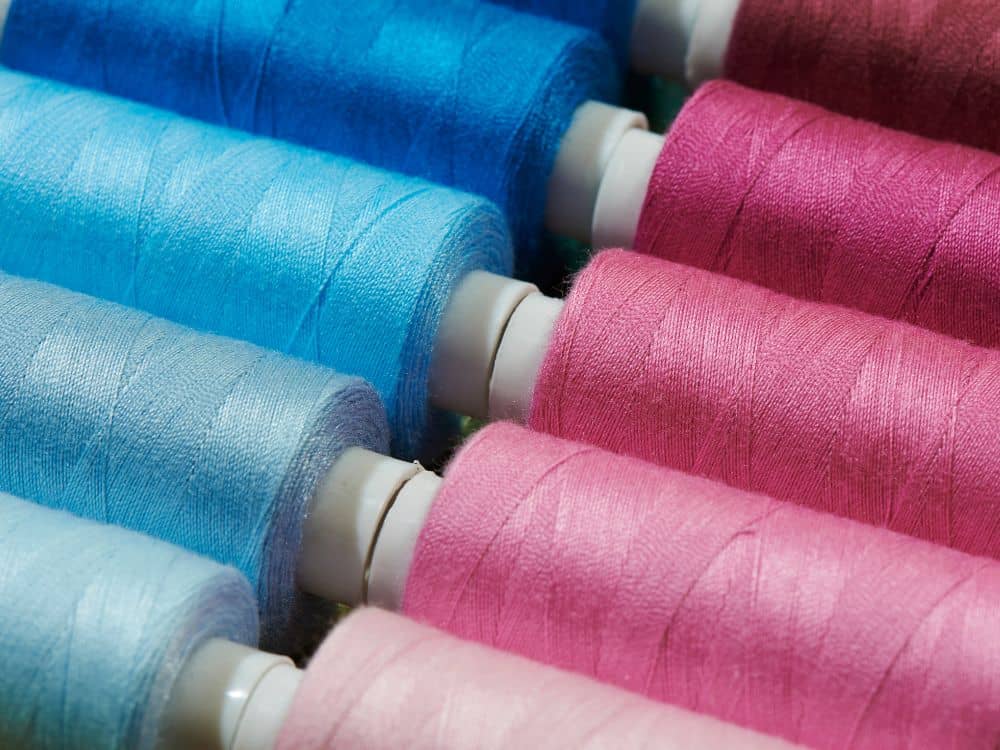
Is lyocell rayon sustainable?
Lenzing has led the way for the responsible production of semi-synthetic fabrics.
Namely, two kinds, both of which you’ve probably heard of among sustainability circles, even if you didn’t know they are technically rayon.
- TENCEL™ modal fabric (made from sustainably-harvested beech trees)
- TENCEL™ lyocell fabric (made from sustainably-harvested eucalyptus trees).
The main difference being that lyocell is created by a solvent spinning technique with organic solvents that causes no significant chemical change to the fibers.
For this reason, it’s easier to call lyocell rayon more sustainable than modal, though both are a significant improvement on their conventional forebearer.
While Lenzing isn’t the only company to produce modal and lyocell, they are considered the most sustainable.
What sets them apart from other producers is their use of a closed-loop system, where nearly all the water and chemicals can be recaptured for reuse instead of being discarded into the environment.
Not only are lyocell and modal (especially TENCEL™) better from an environmental standpoint, but they are also stronger, more absorbent, and more durable. They also have more elasticity and can handle moisture better than regular rayon, but generally they come at a higher price.
Is bamboo rayon sustainable?
Now we’ve got to break the good fabric news with one type of rayon that is commonly misrepresented as being sustainable: bamboo rayon.
What is bamboo rayon?
It’s any kind of rayon made from wood pulp of bamboo chutes.
That means pretty much all bamboo fabric begins eco-friendly—but not all remain that way.
The base grass is one of the most sustainable plants in the world because it grows quickly without needing a lot of water, pesticide, and herbicide inputs. Fast growth means it consumes more carbon dioxide (and produces more oxygen) than most other plants.
However, it too requires a tremendous amount of chemicals to process into rayon, around 50% of which are released into the environment except for a few brands who process their bamboo in a closed-loop process.
To be safe, look for “bamboo lyocell” when you read clothing labels.
What is cotton rayon and is it sustainable?
Cupro fabric (cupra) is a type of rayon made with either a byproduct of the cotton industry (cotton linter) or recycled garments.
We’re certainly not falling head over heels for cupra rayon, but if you’re looking for a vegan silk alternative and have found a brand that’s transparent about the closed-loop process they use to produce it, then this fabric might be for you (if you promise to wear it forever!).
5. Pros And Cons Of Rayon Fabric
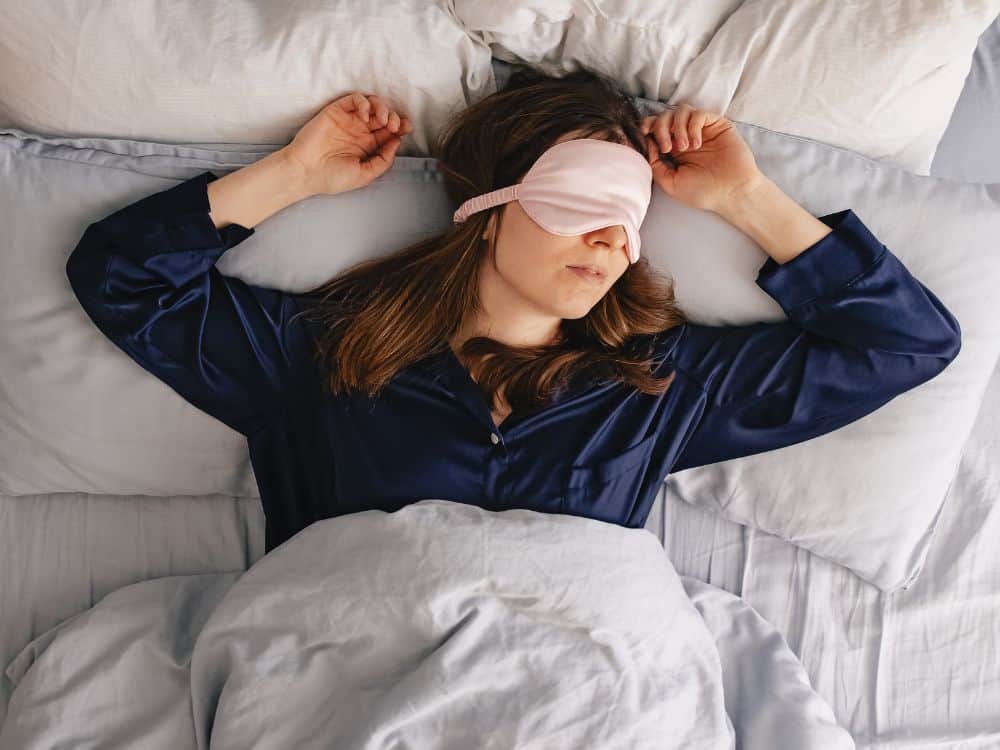
If the answer to “How sustainable is rayon?” is “not very”, what are some reasons why people are still drawn to it?
Pros of rayon fabric
Rayon’s main attraction is that it can be used as an affordable silk alternative because it’s breathable, moisture-wicking, stretchy, soft to the touch, and drapes well.
Rayon is also comfortable and non-irritating; it’s commonly found in blouses, trousers, dresses, skirts, t-shirts, and interior decorations like bed sheets, upholstery, and blankets.
It’s also a versatile fiber, meaning it easily blends with other fibers to enchance its properties and accepts dyes well, yielding a bright and beautiful material for lingerie and luxury garments.
Cons of rayon fabric
Though rayon dyes easily, it’s notorious for fading relatively quickly for that same reason.
It’s also tricky to care for, as rayon fibers have a very low tensile strength when wet, meaning the fabric is very vulnerable every time you wash it. So follow the washing instructions carefully.
For all the benefits it boasts about, it’s far from being the only fabric to do so. Other fabrics (and more sustainable ones at that) offer the same things.
The natural materials linen and hemp fabric, for example, are just as breathable and flattering as rayon fabric but are far more sustainable all-around.
Each raw material (flax and hemp, respecitvely) requires practically no inputs in the manufacturing. Being 100% natural fiber means it can be safely composted as long as no toxic dyes were used.
If you’re considering this breathable fabric for a breezy new summer outside, check out some linen clothing brands instead.
Or if you want something soft and smooth, many kinds of ethical wool and ethical cashmere (“ethical” being an important qualifier for both) will offer the same level of comfort, along with superior durability and performance in athletic wear.
6. Rayon Fabric Vs Cotton
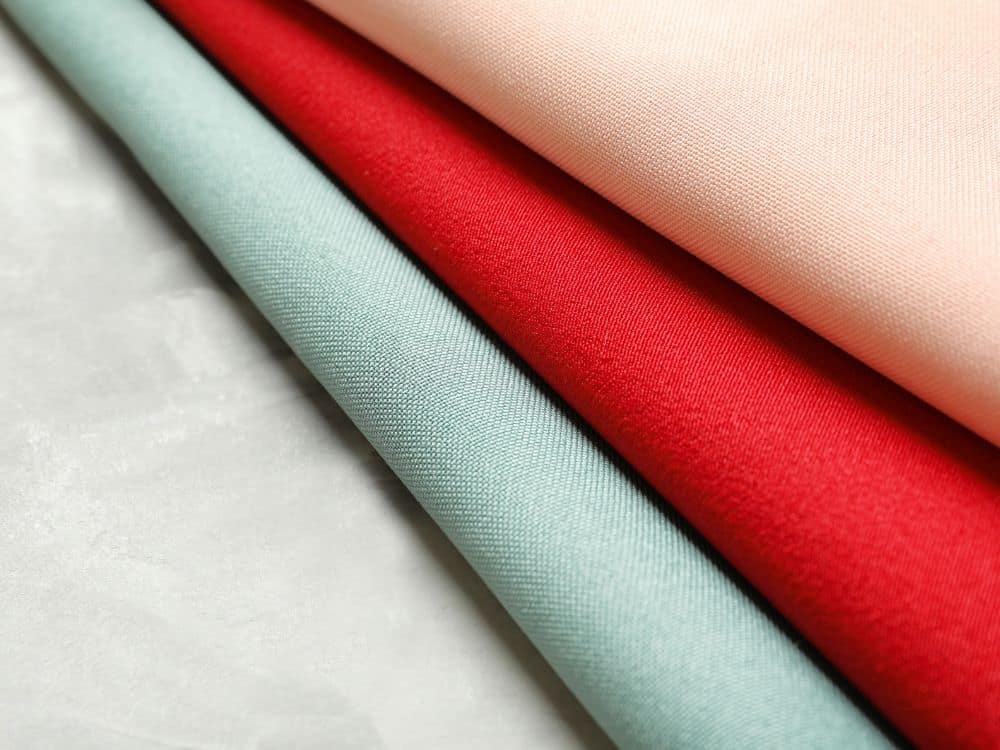
Rayon is sometimes used as a cheaper substitute for cotton. While they may be found in similar products, like underwear, activewear, and some industrial items, there are some differences worth noting.
- The colorfastness of rayon fiber isn’t as strong as cotton and colors might fade quicker.
- Cotton is a more durable fabric than rayon. It’s also stronger, especially when wet (whereas rayon loses some of its strength when wet).
- Rayon fabric is very flammable, whereas cotton isn’t as prone to catching fire.
- Rayon can mimic peace silk—cotton would have a hard time resembling a fancy silk dress.
We mentioned earlier how rayon biodegrades more easily than cotton, despite the fact that cotton is natural and rayon is semi-synthetic.
Does that mean it’s more or less eco-friendly than cotton?
That depends on both the cotton and the rayon. Comparing rayon vs cotton isn’t as straightforward as comparing most fabrics, because there are multiple types of both.
TENCEL™ Lyocell rayon would be considered more sustainable than traditional cotton (the dirtiest crop in the world), while organic cotton (provided it’s truly organic and hasn’t fallen victim to some of the greenwashed GOTS-certified cotton) still trumps even the most sustainable rayon.
If choosing between traditional cotton and traditional rayon, well… is there an Option C?
Did you know we Have a Newsletter?
We cover the latest in sustainable living, fashion, zero waste, beauty, travel, finance and more…
Final Thoughts On What Is Viscose Rayon
How eco-friendly is rayon?
Let’s just say there’s a reason we left it off our list of sustainable fabrics.
Aside from TENCEL™ lyocell and modal, rayon scores low on the Made-By Environmental Benchmark for Fibres.
In fact, it’s classified as a Class E fiber, which is the lowest rank in terms of human toxicity, ecotoxicity, greenhouse gas emissions, and energy, land, and water use.
If we are going to wear it, we want to stick to types of rayon produced in a transparent closed-loop process.
Alternatively, we’ll stick to second-hand rayon based fabrics from some of our favorite online thrift stores.
On the whole, the sustainable place for rayON is rayOFF of our bodies—especially with so many other natural fibers out there.
The toxic chemicals and depleted forests are reason enough to say “no” to this fabric until some serious improvements are made—regardless of how flattering that fair trade dress is.
Pin these:
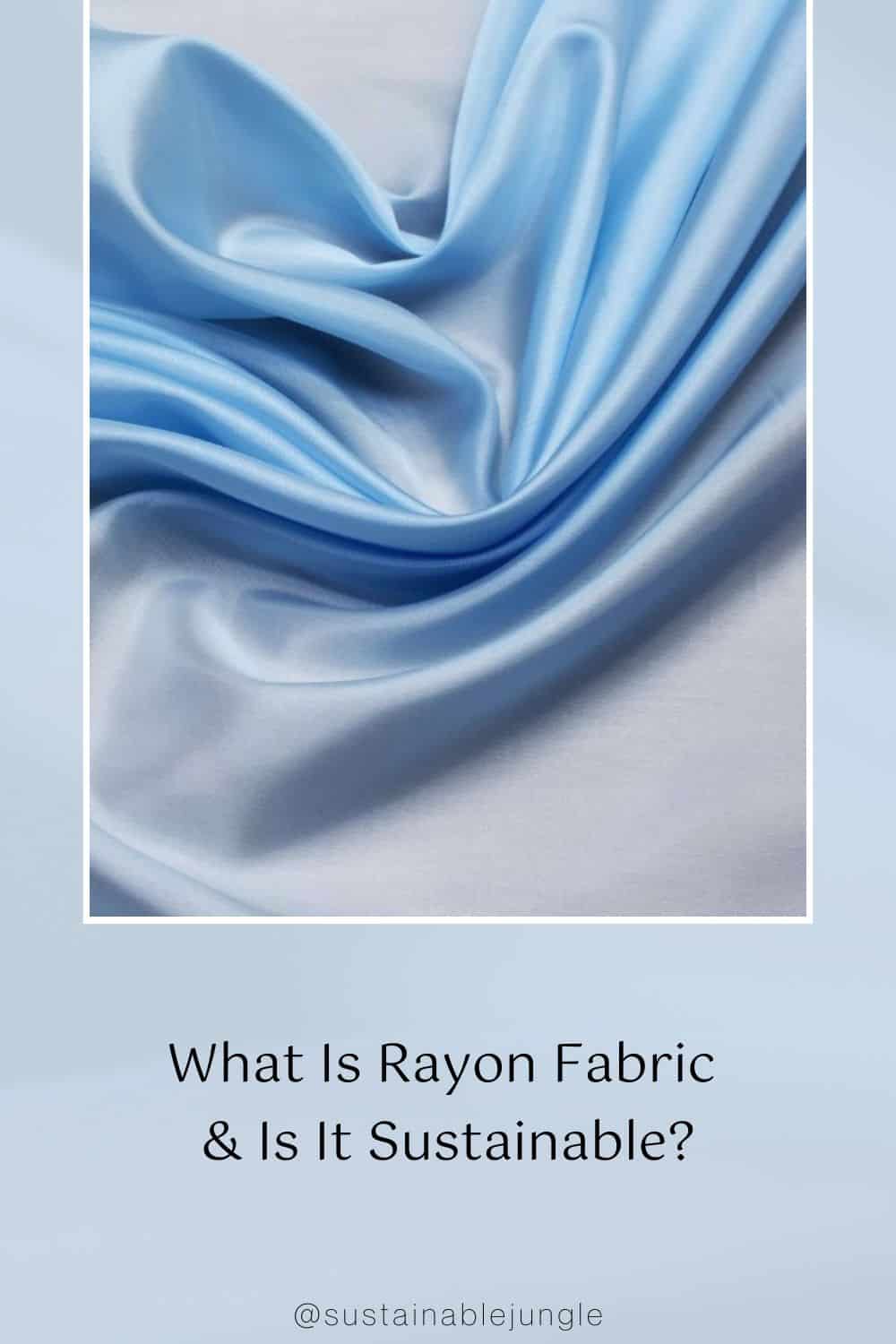
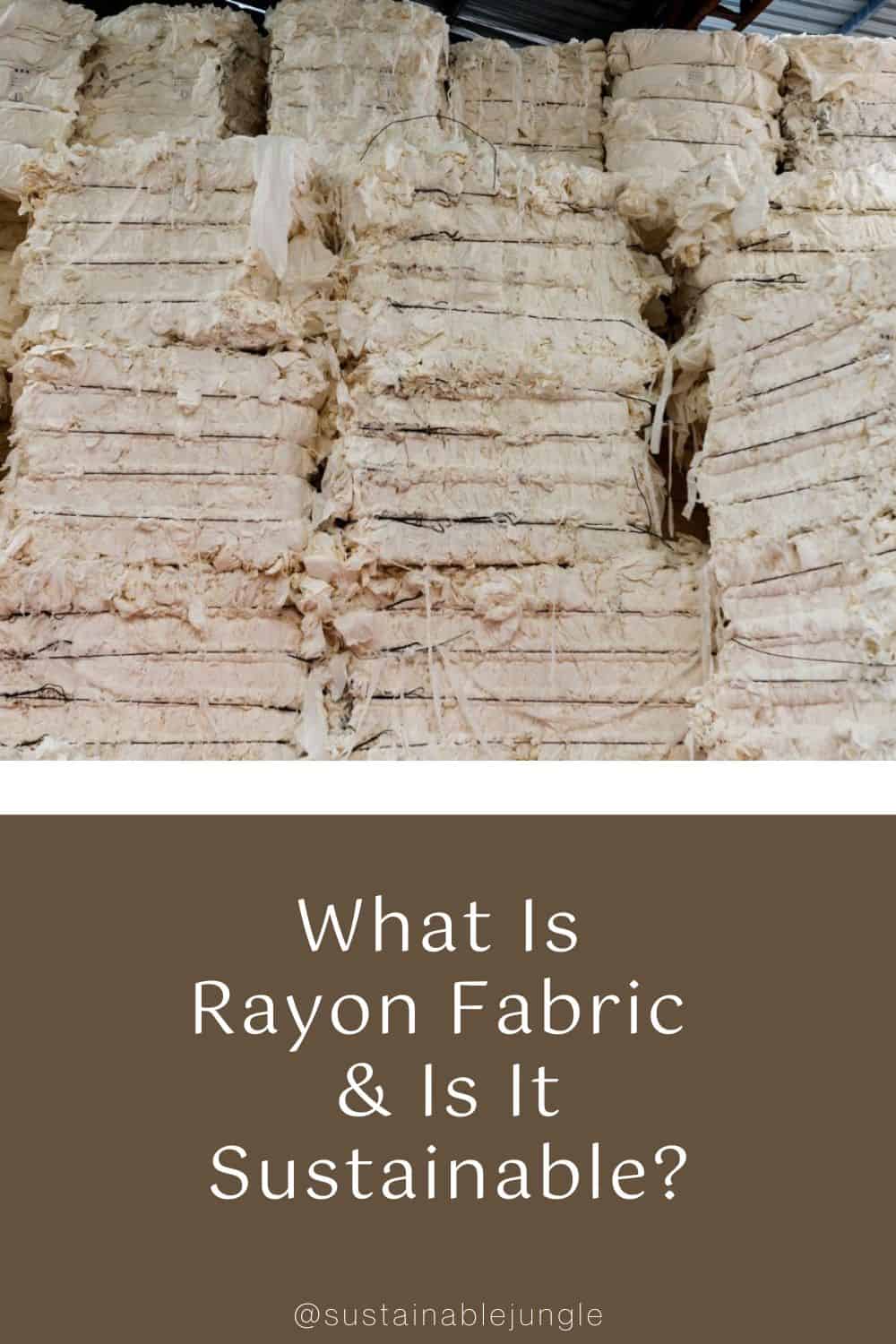

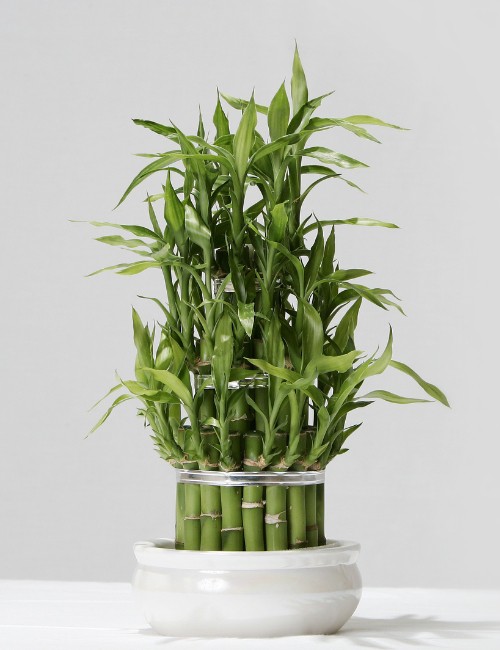
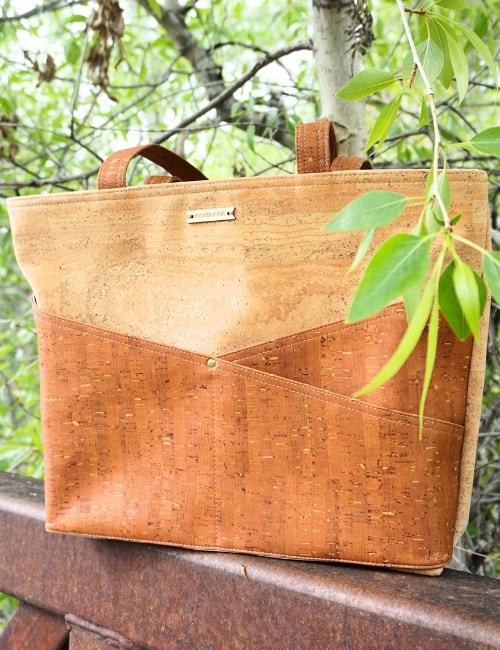
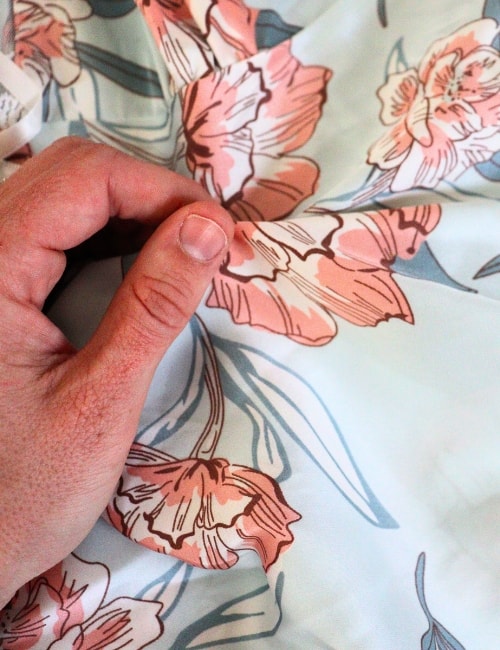
Does sunlight have a negative effect on curtains made of rayon? Do household
bugs eat rayon causing it to degenerate? Does heat from a household furnace have an affect on rayon. What might cause rayon to delaminate and cause shredding of the material?
How scary is all that!! I knew there was another reason I didn’t like it, as if being heat retaining wasn’t enough. I get very hot wearing viscose by any name, so no viscose/rayon for me. Thanks!
Wow, really eye-opening information! Thank you.